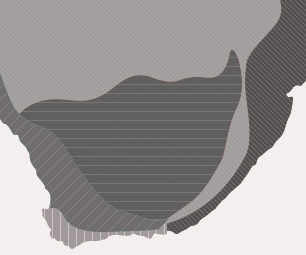Shrub
Myrsine africana L.
Family:
Common names: Cape myrtle, African boxwood (Eng.); vlieëbos, mirting (Afr.); moroko-pheleu, semapo, sethakhisa, thakisa (Southern Sotho)?
Plant Attributes:
Plant Type:
SA Distribution:
Soil type:
Flowering season:
PH:
Flower colour:
Aspect:
Gardening skill:
Special Features:
Horticultural zones

Morella cordifolia (L.) Killick (= Myrica cordifolia )
Family:
Common names: wax berry, candle berry (Eng.); wasbessie, wasbessiebos, wasbossie, glashout (Afr.); ilethi (Zulu)
Plant Attributes:
Plant Type:
SA Distribution:
Soil type:
Flowering season:
PH:
Flower colour:
Aspect:
Gardening skill:
Special Features:
Horticultural zones

Mundulea sericea (Willd.) A. Chev.
Family:
Common names: cork bush, silver bush, Rhodesian silver-leaf (Eng.); kurkbos, blou-ertjieboom, olifantshout, visboontjie, visgif, mangaanbos (Afr.); omukeka (Herero); !gaeb (Nama/Damara); mosetla-thlou (Northern Sotho); omumbaganyana (Oshiwambo); umSindandlovana (Swazi); ntsandzandlopfu, maibana, mohato, mosikatse, mosita-thlou, moswaatlou (Tswana); mukunda-ndou (Venda); umHlalantethe, umSindandlovu (Zulu)
SA Tree No: 226
Plant Attributes:
Plant Type:
SA Distribution:
Soil type:
Flowering season:
PH:
Flower colour:
Aspect:
Gardening skill:
Special Features:
Horticultural zones

Mitriostigma axillare Hochst.
Family:
Common names: dwarf-loquat (Eng.); dwerglukwart (Afr.) South African National Tree List no. 689.2
SA Tree No: 689.2
Plant Attributes:
Plant Type:
SA Distribution:
Soil type:
Flowering season:
PH:
Flower colour:
Aspect:
Gardening skill:
Special Features:
Horticultural zones

Mimetes hottentoticus E.Phillips & Hutch.
Family:
Common names: silver pagoda, Hottentotstompie (Afr.)
Plant Attributes:
Plant Type:
SA Distribution:
Soil type:
Flowering season:
PH:
Flower colour:
Aspect:
Gardening skill:
Special Features:
Horticultural zones

Mimetes hirtus (L.) Salisb. ex Knight
Family:
Common names: marsh pagoda, red and yellow bottlebrush, tall pagoda, hairy mimetes, pineapple bush ( Eng. ); kreupelboom, vleistompie, rooistompie, pynappelstompie (Afr.)
Plant Attributes:
Plant Type:
SA Distribution:
Soil type:
Flowering season:
PH:
Flower colour:
Aspect:
Gardening skill:
Special Features:
Horticultural zones

Mimetes chrysanthus Rourke
Family:
Common names: golden pagoda, golden mimetes, gouestompie
Plant Attributes:
Plant Type:
SA Distribution:
Soil type:
Flowering season:
PH:
Flower colour:
Aspect:
Gardening skill:
Special Features:
Horticultural zones

Metarungia galpinii (Baden) Baden
Family:
Common names: southern orange-lips
Plant Attributes:
Plant Type:
SA Distribution:
Soil type:
Flowering season:
PH:
Flower colour:
Aspect:
Gardening skill:
Special Features:
Horticultural zones

Metarungia longistrobus (C.B.Clarke) Baden (= Macrorungia longistrobus C.B.Clarke)
Family:
Common names: sunbird bush (Eng.); sonbekkiebos (Afr.)
Plant Attributes:
Plant Type:
SA Distribution:
Soil type:
Flowering season:
PH:
Flower colour:
Aspect:
Gardening skill:
Special Features:
Horticultural zones

Metalasia muricata (L.) D.Don
Family:
Common names: coast metalasia, white bristle bush (Eng.); blombos, witsteekbossie, steekbos (Afr.)
Plant Attributes:
Plant Type:
SA Distribution:
Soil type:
Flowering season:
PH:
Flower colour:
Aspect:
Gardening skill:
Special Features:
Horticultural zones






Rate this article
Article well written and informative
Rate this plant
Is this an interesting plant?
Login to add your Comment
Back to topNot registered yet? Click here to register.